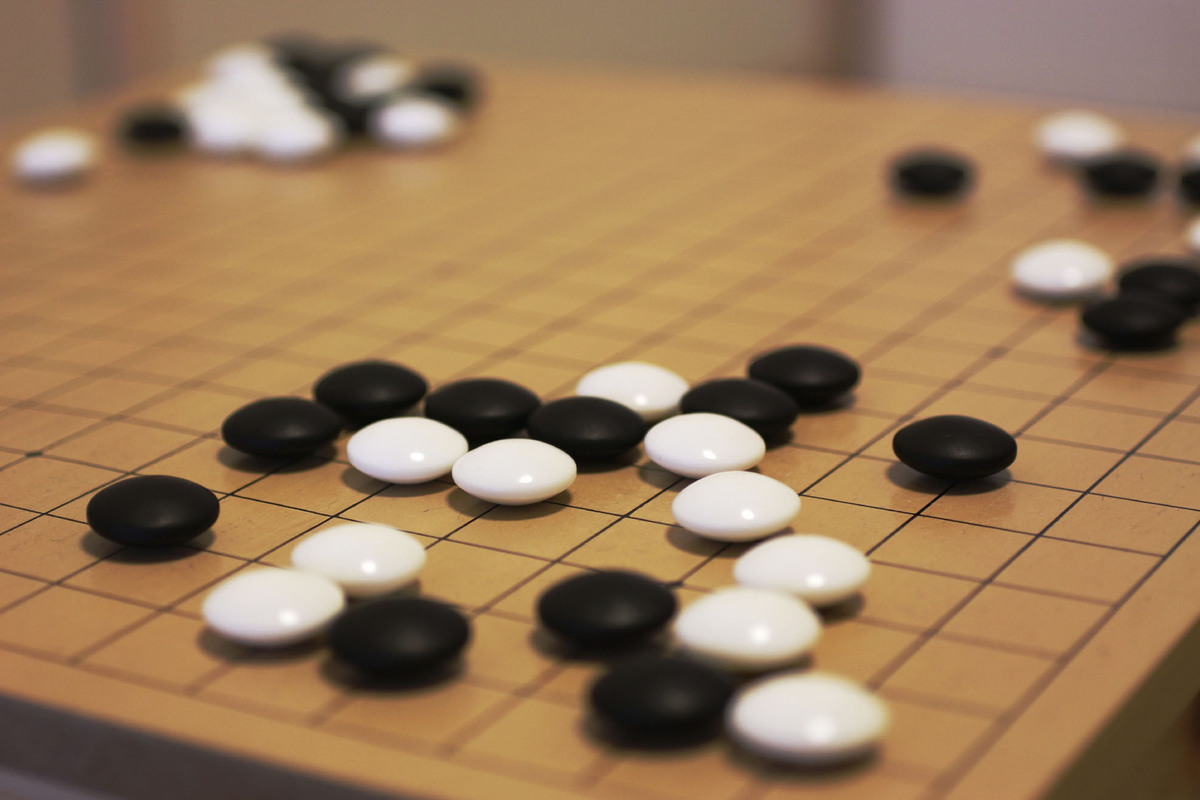

Nestled in North Carolina’s Blue Ridge Mountains, the city of Asheville couldn’t seem farther removed from China. A player’s final score is his number of walled-in points less the number of his stones lost by capture.Originally published by US-China Today. The black stones in group c in the figure, however, do not possess an eye, and a white stone placed on the indicated point would result in the complete enclosure and thus the capture of the black stone group. The black stones in group d possess such an eye.

Groups of stones are in effect invulnerable if they contain an “eye,” which consists of two or more vacant points arranged such that the opposing player cannot place his stone on one of the points without that stone’s itself being captured. A stone cannot be placed on a point completely surrounded by enemy stones unless it makes a capture by so doing, as white does in group c. A stone or group of stones is “live” (not captured) as long as it is connected to a vacant intersection, as are the black stones in groups c and d and the white stones in b and e. A stone or a group of stones belonging to one player can be captured and removed from the board if it can be completely enclosed by his opponent’s stones, as white is by black in groups a, f, and g and prospectively in groups b and e in the figure. Two or more stones are “connected” if they are adjacent to each other on the same horizontal or vertical line, as are the white stones in group e in the figure.

Players try to conquer territory by completely enclosing vacant points with boundaries made of their own stones. Each player in turn (black moves first) places a stone on the point of intersection of any two lines, after which that stone cannot be moved. Traditionally, go is played with 181 black and 180 white go-ishi (flat, round pieces called stones) on a square wooden board ( goban) checkered by 19 vertical lines and 19 horizontal lines to form 361 intersections more recently, it has been played electronically on computers and on the Internet. Play spread worldwide after World War II. The game became highly popular in Japan in the first half of the 20th century it was also played in China and Korea, and its following grew there in the latter decades of the century. It was given special status there during the Tokugawa period (1603–1867), when four highly competitive go schools were set up and supported by the government and go playing was thus established as a profession. The modern game began to emerge in Japan with the subsequent rise of the warrior ( samurai) class. The game was probably taken to Japan about 500 ce, and it became popular during the Heian period (794–1185). According to some sources, this date is as early as 2356 bce, but it is more likely to have been in the 2nd millennium bce. Go, probably the world’s oldest board game, is thought to have originated in China some 4,000 years ago. Of East Asian origin, it is popular in China, Korea, and especially Japan, the country with which it is most closely identified. Go, (Japanese), also called i-go, Chinese (Pinyin) weiqi or (Wade-Giles romanization) wei-ch’i, Korean baduk or pa-tok, board game for two players. SpaceNext50 Britannica presents SpaceNext50, From the race to the Moon to space stewardship, we explore a wide range of subjects that feed our curiosity about space!.Learn about the major environmental problems facing our planet and what can be done about them! Saving Earth Britannica Presents Earth’s To-Do List for the 21st Century.Britannica Beyond We’ve created a new place where questions are at the center of learning.100 Women Britannica celebrates the centennial of the Nineteenth Amendment, highlighting suffragists and history-making politicians.
Go to it game how to#
COVID-19 Portal While this global health crisis continues to evolve, it can be useful to look to past pandemics to better understand how to respond today.Student Portal Britannica is the ultimate student resource for key school subjects like history, government, literature, and more.From tech to household and wellness products. Britannica Explains In these videos, Britannica explains a variety of topics and answers frequently asked questions.This Time in History In these videos, find out what happened this month (or any month!) in history.#WTFact Videos In #WTFact Britannica shares some of the most bizarre facts we can find.Demystified Videos In Demystified, Britannica has all the answers to your burning questions.Britannica Classics Check out these retro videos from Encyclopedia Britannica’s archives.


 0 kommentar(er)
0 kommentar(er)
